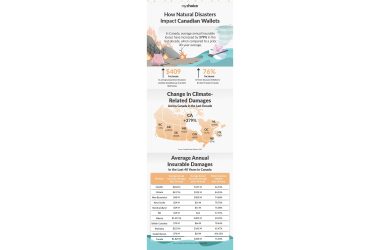So, you’ve decided to join the gig economy. You’ve downloaded the Uber or Lyft app, passed the background check, and you’re ready to hit the road. Your personal auto insurance policy is active and paid for. You’re all set, right?
Well, not exactly. Here’s the deal: the moment you turn on your app and make yourself available for a ride, you enter a dangerous insurance gray area. Your personal policy likely sees this as a commercial activity and could deny a claim in a heartbeat. And the coverage from the rideshare company? It’s full of gaps, like a net with holes too big to catch the small fish.
That Sinking Feeling: The Three Rideshare Periods Explained
Honestly, this is the core of the whole issue. Uber and Lyft break down your driving time into distinct periods, and the insurance coverage shifts with each one. It’s a bit like musical chairs, but with your financial future on the line.
Period 1: The App is On, But No Ride Request
You’re cruising around, waiting for that “ping.” You’re essentially a rolling advertisement. During this time, the rideshare company provides only a minimal amount of liability coverage, and it’s often state-mandated minimums. In many places, that’s shockingly low. The real kicker? They provide no comprehensive or collision coverage for your own car. If a hailstorm dents your hood or you swerve to miss a deer and hit a pole, you’re footing the bill.
Period 2: You’ve Accepted a Ride, But Haven’t Picked Up the Passenger
You’re on your way! The app has given you a destination and you’re navigating to the pickup spot. Coverage here is better. Uber and Lyft ramp up their liability coverage significantly and usually add contingent comprehensive and collision. But—and this is a big but—this contingent coverage has a hefty deductible, often $2,500. A fender-bender on the way to pick up Sarah from the coffee shop could still mean a massive out-of-pocket expense for you.
Period 3: The Passenger is in the Car, En Route to Destination
This is when you have the most robust protection from the rideshare platform. You’re covered by their commercial policy, which includes liability, uninsured motorist, and comprehensive/collision (again, with that high deductible). This is the safest period, insurance-wise. But it’s also the shortest part of your driving shift.
Bridging the Gap: Your Insurance Options
Okay, so the standard setup is risky. What can you do about it? You have a couple of paths, and the right one depends on how seriously you take your side hustle.
Option 1: The Rideshare Endorsement (The Easy Button)
Most major insurers—like Progressive, State Farm, Allstate, and others—now offer a rideshare endorsement (sometimes called a “gap coverage” endorsement). This isn’t a separate policy. It’s a relatively inexpensive add-on to your existing personal auto policy that specifically covers you during Period 1 and, in some cases, fills the deductible gap in Period 2.
Think of it as a perfectly shaped patch for the hole in your insurance net. It’s typically the most cost-effective and straightforward solution for drivers who do this part-time.
Option 2: A Commercial Auto Policy (The Heavy-Duty Solution)
If you’re a full-time driver, treating your rideshare work like a true business, a commercial policy might be the way to go. It provides seamless, comprehensive coverage regardless of what period you’re in. No gaps, no confusion.
The downside? The cost. It’s significantly more expensive than a personal policy with an endorsement. For most casual drivers, it’s overkill. But for the pros, it’s peace of mind.
What Happens If You Don’t Have It? A Costly Game of Chance
Let’s be blunt. Driving without proper rideshare insurance is a massive gamble. If you get into an accident during Period 1 and you file a claim with your personal insurer, you could be in for a world of hurt.
First, they’ll likely investigate. They’ll check your app logs, talk to passengers, and if they discover you were driving for a rideshare company, they can—and probably will—deny the claim. You’d be left paying for all the damages out of pocket. But it gets worse. They could also non-renew or even cancel your policy for material misrepresentation. Suddenly, you’re not just facing a repair bill; you’re facing the challenge of finding new, much more expensive insurance.
Making the Smart Choice: A Quick Checklist
Feeling overwhelmed? Don’t be. Taking the right steps is simple. Here’s a quick action plan.
- Call Your Current Agent. Don’t just assume you’re not covered. Be upfront. Tell them you’re driving for Uber or Lyft and ask about their rideshare endorsement. Get a quote.
- Shop Around. Different companies price these endorsements differently. Get a few quotes from other insurers that are known to be rideshare-friendly.
- Read the Fine Print. Understand what the endorsement covers. Does it cover just Period 1? Does it help with the deductible in Period 2? Clarity is power.
- Factor in the Cost. A rideshare endorsement might add $15-$30 to your monthly premium. Weigh that against the potential cost of a single uncovered accident. It’s a no-brainer.
The Road Ahead is Clearer
The freedom of the gig economy is incredible. But that freedom shouldn’t come at the cost of your financial security. Driving for Uber or Lyft isn’t just a hobby; it’s a business operation on wheels. And every business needs the right insurance. Getting a proper rideshare policy isn’t just a line item on a budget—it’s the seatbelt for your financial well-being, the thing you hope you never need but can’t afford to be without.








